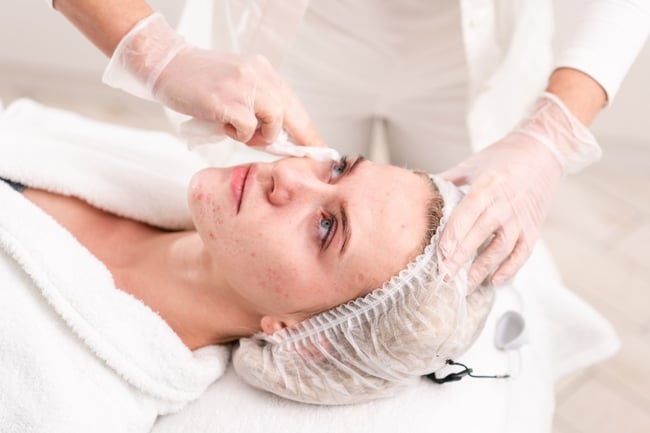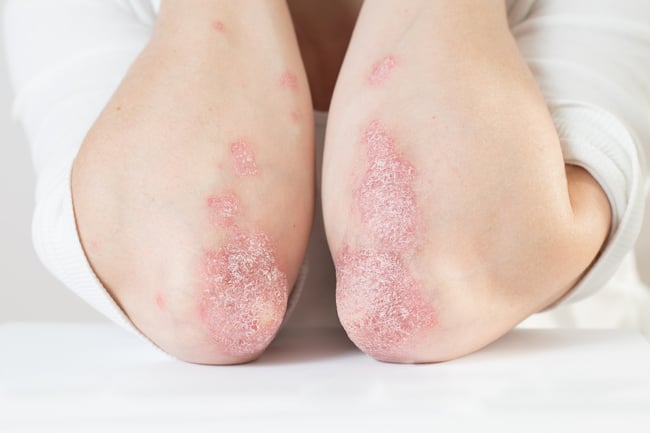Topics: Dermatology
You see it in the news all the time - gossip about which celebrities have “had work done” and which ones haven’t. But what does it actually mean to “have work done”? Plastic surgery is a facet of cosmetic dermatology, which differs significantly from medical dermatology. Both types of practices are important for serving their purposes, though. Read on to learn more about cosmetic vs medical dermatology and the services each branch offers.
Quick Links:
- How Does Cosmetic Dermatology Compare to Medical Dermatology?
- Common Medical Dermatology Treatments
- Why Does Accurate Dermatology Medical Billing Matter When Delivering Care?
How Does Cosmetic Dermatology Compare to Medical Dermatology?
What is Cosmetic Dermatology?
A cosmetic dermatologist is a doctor who treats patients for aesthetic reasons like smoothing wrinkles, correcting skin tone and texture, and tightening up sagging skin. Cosmetic dermatology is an ever-growing specialty to treat patients who desire to look better but have no medical need to do so - the main motivation is a desire to reverse the signs of aging and to appear healthier and younger.

Since the reasons for cosmetic surgery are purely superficial – based on a want rather than a need – cosmetic dermatology isn’t covered by most insurance policies. Some dermatologists prefer this because the patient pays out-of-pocket, so there are no insurance forms for the practice to fill out – which also requires fewer people to be on the office staff.
The American Society for Aesthetic Plastic Surgery reports that dermatologists routinely perform millions of cosmetic surgical and nonsurgical procedures annually, such as:
- Botox
- Dermal fillers
- Chemical peels
- Laser hair removal
- Laser rejuvenation and resurfacing
- Vein reduction
- Skin tightening
What is Medical Dermatology?
On the other hand, medical dermatology is medically necessary and thus considered by the healthcare industry and insurance companies to be different from cosmetic dermatology, as it is geared toward fixing a health problem or injury. It’s medically necessary, and usually therefore covered by insurance. It’s recommended that everyone see a medical dermatologist once a year to check for skin cancer, precancerous skin lesions, and more.
Common Medical Dermatology Treatments
When it comes to cosmetic vs medical dermatology, the biggest difference is the conditions they're able to treat. Medical dermatologists can treat a wide array of conditions and diseases affecting the skin, including:
Acne
If you have acne, a medical dermatologist can diagnose you by looking at your breakouts. During your appointment, a dermatologist will note what types of acne you have, where the breakouts are located, your age, and other factors in order to develop the best treatment plan customized for your skin.

Skin Cancer
Skin cancer is an abnormal growth of skin cells, which is usually caused by the sun’s harmful rays. The type of skin cancer a person gets is determined by where the cancer begins. If the cancer begins in skin cells called basal cells, the person has basal cell skin cancer. When cells that give our skin its color become cancerous, melanoma develops. The most common type of skin cancer, basal cell carcinoma can show up on the skin in many ways. A type of skin cancer, melanoma is often called the “most serious skin cancer” because it can spread from the skin to other parts of the body.
Eczema
Eczema is an umbrella term for a group of conditions that causes inflamed, irritated, and often itchy skin. This might be labeled as atopic dermatitis, contact dermatitis, stasis dermatitis, or another form of eczema. Treatments include applying a topical ointment or special lotion to the skin, bathing, or other medicines.
Warts
A dermatologist can tell whether you have a wart by looking at it; in rare cases, a dermatologist may need to perform a skin biopsy to be certain that it’s not a symptom of another condition. Warts often go away without treatment, especially for children. However, for adults, warts may not disappear as easily or as quickly. Two common treatments for warts include cryotherapy - or freezing the wart off - and excision, simply cutting the wart out of the skin.
Psoriasis
Dry, thick, and raised patches on the skin are the most common sign of psoriasis; these patches are often covered with a silvery-white coating called “scale” and they tend to itch. Your medical dermatologist can create a treatment plan that meets your individual needs to help combat your psoriasis; typically they’ll ask questions about what your symptoms are, if there is a family history of psoriasis, recent changes in your life, etc. A personalized treatment plan can relieve your symptoms and help you see clearer skin; this might include medication you apply to your skin, advice to help you care for your skin, and tips to help prevent flare-ups. To control psoriasis, some people also need light treatments or medication that works throughout the body.

Rosacea
If your dermatologist suspects you have rosacea, you won’t need medical tests - no medical test can tell whether you have rosacea. Instead, your medical dermatologist will examine your skin and your eyes, in addition to ruling out other medical conditions that might appear to be rosacea, such as lupus or an allergic reaction. Treatment for rosacea may look like determining what “triggers” the rosacea, utilizing sunscreen, and implementing a sensitive skincare regimen.
Alopecia
There can be many causes for hair loss; your medical dermatologist will examine the area(s) with hair loss carefully, look at your nails, and ask some questions in order to diagnose you. For some conditions, testing is necessary to make sure alopecia areata is the cause of your hair loss; for example, a blood test can look for other diseases caused by the immune system. A treatment plan might include injections of corticosteroids in the affected areas every 4 to 8 weeks to help stimulate hair growth, or a topical solution might be recommended.
Contact allergies
Contact dermatitis is a rash that crops up on your skin when you touch or have a reaction to a certain substance; the rash could be red, itchy, and uncomfortable, but it’s not life-threatening. It might be caused by an allergy or because the protective layer of your skin got damaged. Examples include getting into some poison ivy or getting a rash from latex gloves. Treatment can usually involve home remedies like washing your hands with mild soap and water or taking an oral histamine for itching; your medical dermatologist might perform further tests if these solutions don’t work.
Why Does Accurate Dermatology Medical Billing Matter When Delivering Care?
When considering outsourcing medical billing, you have to make sure that it is the right decision for your dermatology practice. Part of that decision involves trusting an experienced third-party to hold the responsibility of your medical billing. An outsourced medical billing firm can typically maintain better consistency and control of a dermatology practice’s finances since the internal team must balance the rest of the operations of the practice.
At NCG Medical, we’ve spent the past 40 years tailoring our medical billing services to meet the needs of many different specialties, including medical billing, revenue cycle management, credentialing, and more. Our dermatology insurance billing services can give you the medical billing expertise your practice needs to grow and thrive in today’s modern medical landscape. Contact us today!

